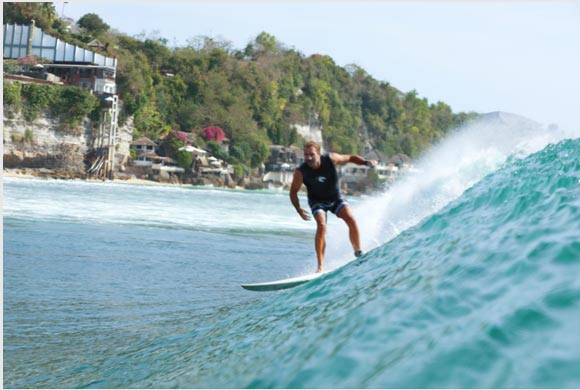SURF TECHNIQUE: HOW TO DUCK DIVE

SURF TECHNIQUE: HOW TO DUCK DIVE
& HOW TO TURTLE ROLL
Swell Surf technique series:
If you have ever tried to surf without knowing how to turtle roll or duck dive, you might not have had a great time. Both turtle rolling and duck diving are an essential part of surfing. Without doing either, we would spend our entire surf session washing back to shore every time a set came through.
If you’re unsure whether you should turtle roll or duck dive your board, this article is for you.
If you’re unable to safely and effectively paddle out to the lineup on your own, this article is for you. And lastly, if you can duck dive or turtle roll, but not with 100% effectiveness, this article is for you.
Here at Swell Surf Camp, we want to give you the tools not just to surf when you are on your learn to surf holiday with us, but to surf anywhere in the world.
SURF TECHNIQUE: HOW TO DO THE TURTLE ROLL
1. Which type of board are you riding?
Do you want to know if you should turtle roll or duck dive? Look at what you’re riding. If you’re on a longboard, or even a fun size, and you cannot easily push the entire board under water, then you should be turtle rolling.
2. Don’t rush it timing is everything
When you arrive at the beach, don’t immediately run into the ocean to paddle out. First, warm up, relax, and watch what the waves are doing. As you watch the water, you should look for any channels that may exist help your paddle out. Time your paddle out for a lull between sets.
3. Walk your board out
To enter the water, walk your board out with it tucked safely under your arm to chest deep water. We do this to ensure that our board stays safely at our side and does not get washed into any other surfers. Additionally, if you lie on your board to paddle in too shallow of water, you risk breaking the fins off of the board.
4. Spot the wave ahead and get ready to roll
As you paddle out, you should be constantly looking out to sea for oncoming waves. When you see a wave approaching, wait for the wave to be 2 meters (6 feet) away, and get ready to begin your turtle roll. If the wave approaching is white water or a wave breaking in front of you, you will have to turtle roll. If the wave is just cresting or rolling through unbroken, you can continue to paddle over the wave.
5. Grab your rails and flip
To execute a proper turtle roll, grab the rails of your board with both hands firmly. Your hands should be gripping the rails directly in front of your chest. With both rails tightly grasped, roll over with the board, sinking underwater as you expose the backside of the board to the surface.
6. Extend the arms (optional)
While underwater, some surfers choose to extend their arms, which pushes the board out of the water, giving the wave room to travel in the space between your body and the extended board. This is done so that the board does not get ripped from the surfer’s hands.
7. Resurface, roll, and get back on your board
Once the wave passes over you, pull the board close to your chest and roll back onto your board. Center yourself on the sweet spot of your board and resume paddling. Be ready to repeat when the next wave breaks in front of you.
Practise in the pool at Swell
During our learn to surf course we give paddle, duck dive and turtle roll lessons in our pool, so you can praqctise the right surf technique some more.
SURF TECHNIQUE VIDEO: HOW TO DO A TURTLE ROLL WHEN SURFING
Next up in our learn to surf technique series
HOW TO DUCK DIVE

1. Which type of board are you riding?
If you’re riding a shortboard, and you are strong enough to completely submerge the board underwater, then you should be using the duck dive to paddle out. If you’re riding a shortboard but cannot submerge the board under the water with ease, then you should turtle roll. Both are effective, and both keep your board in control and away from other surfers.
2. Walk your board out
Just like when you’re paddling out with a longboard, when you’re riding a shortboard you must walk your board out to chest deep water before beginning to paddle. If you try to duck dive in shallow water, you could hurt yourself and damage your board.
3. Face towards the wave and paddle hard
While paddling at an angle might be a useful way to get around cresting waves. If a wave is breaking in front of you, to properly execute your duck dive you must face the wave and paddle towards it. Meaning your paddle direction should be perpendicular to the lines of waves washing to shore.
4. Spot the wave and push your board underwater
Similarly, to when you paddle out with a longboard, when you paddle out with shortboard you must constantly be looking out to sea for oncoming waves. Make sure you do not mess around and go with speed and power towards the wave. The faster you go, the faster you will come out the back on your resurface. When the oncoming wave is 2 meters away (6 feet), grab the rails (the sides) of your board and push the board under water. At this step in your duck dive, your arms should be extended with your elbows locked and your board should be completely submerged under water.
5. Use your foot
The next step in executing a perfect duck dive is to use your foot. Place your foot at the tail end of your surfboard—on your traction pad if you wave one— and submerge the tail of your board. Raise your tailbone to the sky as you plant your foot, shaping your body like a triangle, to engage your body weight effectively. Surfers typically use the foot that would be considered their “back foot” while surfing.
6. Pull yourself under
Now that your board is completely submerged underwater by three points of contact (two hands and your foot) you must submerge yourself. First take a deep breath, then pull yourself underwater towards your submerged board, to allow the oncoming breaking wave room to roll over you. If your duck dive is timed correctly, you should not feel the force of the wave as it passes over you. If you are not submerged deep enough, you may be pushed around by the wave while underwater.
7. Breaststroke kick (optional)
On particularly large days, it is challenging to execute a proper duck dive even with perfect technique. The waves are simply too powerful to get under. You will find that at the deepest point of your duck dive the wave will still reach you, and either push you down deeper underwater or wash you back towards the shore. To remedy this issue that only occurs on bigger swells, perform a breaststroke kick (or two) at the deepest point of your duck dive. This will allow you to plunge deeper underwater and avoid the force of larger and more powerful waves.
8. Resurface and repeat
Once you pull yourself to your board and execute your kicks, you will find that you will naturally rise upward to the surface the other side of the breaking wave. Center yourself on your board, wipe the hair and water out of your eyes, and paddle on, but be ready to repeat at any moment.
SURF TECHNIQUE VIDEO: HOW TO DUCK DIVE
SURF TECHNIQUE VIDEO: ADVANCED DUCK DIVING WITH JOHN JOHN FLORENCE
More videos on how to duck dive
Here at Swell Surf Camp, our surf instructors will ensure that you perfect the art of paddling out. Whether you are learning to turtle roll or duck dive, we will work with you until paddling out becomes a breeze. Our goal is for you to leave our Caribbean surf camp with enough knowledge to surf anywhere in the world!
This article on how to duck dive and do a turtle roll is part of the surf technique series for beginners.
Other articles in this series are:
-
WHERE IS SWELL LOCATED?
Swell Surf camp is located on the North coast of the Dominican Republic, right in the center of the cool surfer town of Cabarete. With 3 international airports to choose from it's also one of the easiest places to get to for a quick surf getaway. Puerto Plata Airport is only 25 minutes away from Swell. On the' getting here' page you'll find the different options of getting to us.
-
ABOUT SWELL SURF CAMP
Founded in the winter of 2009, Swell Surf Camp emerged from Jeroen and Clare Mutsaars vision. They lived in the Dominican Republic for eight years and spotted a gap in the surf camp market for higher quality accommodations combined with an engaging social atmosphere. Their extensive travel and stay experiences across different countries like Costa Rica, Nicaragua, Peru, Hawaii, Indonesia and various European nations fueled their passion to elevate the surfing retreat experience.
Swell Surf Camp is renowned as the world’s first luxury surf camp tailored specifically for beginners. The founders collaborated with a notable Swiss architect to design facilities that blend comfort with style. This innovative approach ensures every guest enjoys superior lodging and amenities. Since its inception, Swell has taught over 9,000 people how to surf with an emphasis on safety, fun, and structure.
Our achievements speak volumes. Swell has collected numerous accolades and maintains hundreds of stellar reviews from guests globally. Recognized repeatedly as the leading destination for luxury surf vacations, our commitment to excellence keeps us at the forefront of the industry.
Beyond surfing, Swell offers a diverse range of activities including kitesurfing, wingfoiling, and yoga classes. Guests can also enjoy horse riding both on scenic beaches and mountain trails—plus exciting adventure-filled excursions like canyoning.
A crucial element of any vacation is food, and here at Swell we excel. We provide delicious home-cooked meals daily. For evenings out, guests find themselves just minutes away from an array of dining options that promise satisfying culinary adventures.
For those who prioritize upscale amenities and wellness in a unique setting built around learning surf skills amid profound natural beauty, Swell should be on the top of your surf destination list
-
WHAT TO EXPECT FROM A 1 WEEK LEARN TO SURF HOLIDAY
Dreaming of catching your first wave but wondering if surf lessons are really for you? At Swell Surf Camp, our lessons are designed specifically for beginners, and we mean absolute beginners, particularly those between 40 and 55 from cities like New York, Boston, or Toronto. You’ll never feel rushed, lost, or out of place. Our expert instructors genuinely love teaching, and their approach is as much about encouragement as it is about skill-building. Every instructor carefully tunes each lesson to fit one person, you, so you always get personalized support, whether you’re working on basic paddling, learning to pop up, or building confidence in the water.
The journey at Swell Surf Camp is about progression, not perfection. You’ll start with the very basics, practicing on the sand before moving into gentle ocean waves with your instructor right beside you. Throughout every lesson, our focus is on clear communication, safety, and keeping things fun. As you progress, our instructors give you feedback in real-time, helping you celebrate small wins and guiding your next steps. You’ll learn solid surfing foundations, water safety, and even the unwritten rules of surf culture. By the end of your stay, you’ll be amazed at your own growth and how natural surfing feels. Don’t wait to discover how transformative a single lesson can be, book your surf adventure at Swell Surf Camp and let your surfing journey begin!
-
WHAT SPORTS DOES SWELL OFFER?
It's not only surfing that's on offer at Swell, we also offer learn to wingfoil and learn to kitesurf packages.





